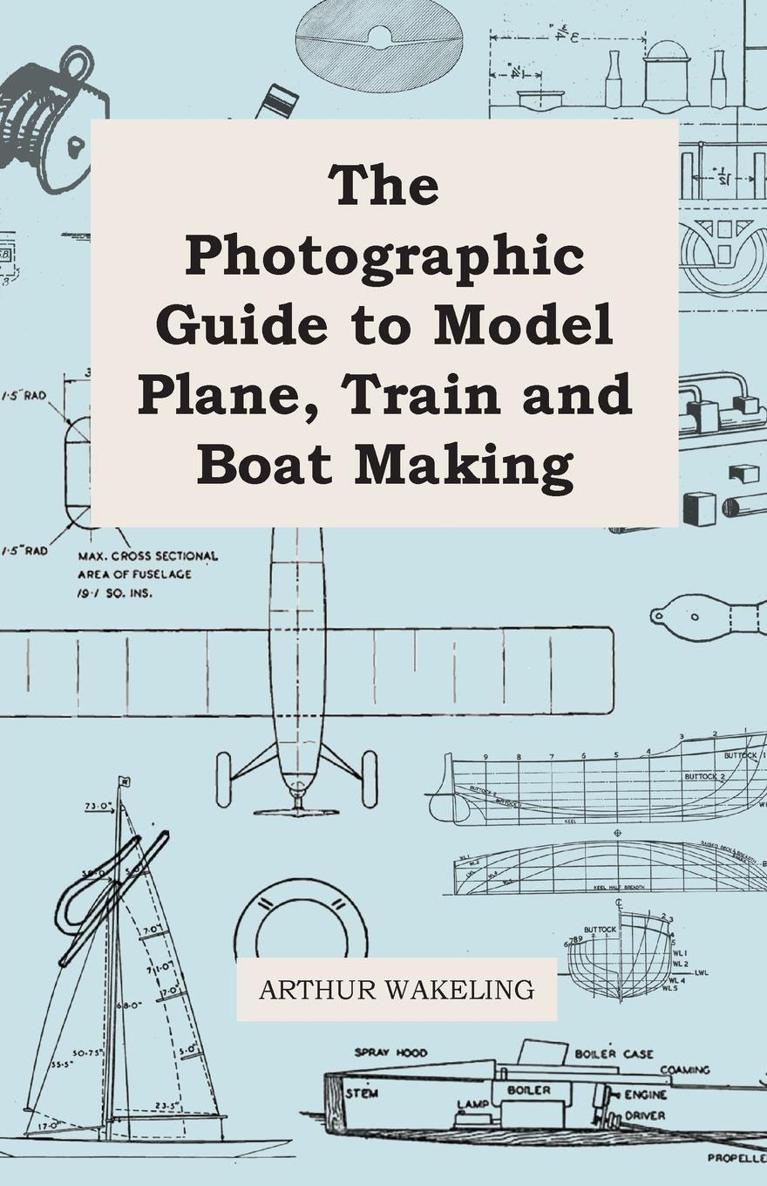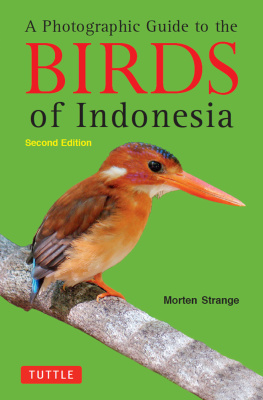The Photographic Guide to Model Plane, Train and Boat Making
by
Arthur Wakeling
Copyright 2011 Read Books Ltd.
This book is copyright and may not be reproduced or copied in any way without the express permission of the publisher in writing
British Library Cataloguing-in-Publication Data
A catalogue record for this book is available from the British Library
Contents
Model Building
MODEL MAKING
Model Building
Model building as a hobby involves the creation of models either from kits, or from materials and components acquired by the builder. The most common form of modelling is the scale model, produced with varying degrees of accuracy, dependent on the interests and intentions of the creator. This is most generally a physical representation of an object, which maintains accurate relationships between all important aspects of the model, although absolute values of the original properties need not be preserved. Scale models are used in many fields including engineering, architecture, film making, military command, salesmanship and most widely, for fun with hobby model building. While each field may use a scale model for a different purpose, all scale models are based on the same principles and must meet the same general requirements to be functional.
Perhaps the most common form of model building is model cars, or toy cars. This category can often include other miniature motor vehicles, such as trucks, buses, or even ATVs as well. Because many miniature vehicles were originally aimed as children as playthings, there is no precise difference between a model car and a toy car, yet the word 'model' implies either assembly required or some attempt at accurate rendering of an actual vehicle at smaller scale. Regarding the former, the kit building hobby became popular through the 1950s, while the collecting of miniatures by adults started to pick up steam around 1970. Precision detailed miniatures made specifically for adults are a significant part of the market since perhaps the mid-1980s
Miniature models of automobiles first appeared about the time real automobiles did - first in Europe and then, shortly after, in the United States. These were initially duplicates made of lead and brass, and later in the twentieth century, made of slush cast plaster or iron. Tin and pressed steel cars, trucks, and military vehicles, like those made by Bing of Germany followed in the 1920s through the 1940s, but models rarely copied actual vehicles - it is unclear why, but likely had to do with the crudeness of early casting and metal shaping techniques which prevented precision rendering of an actual car's shape and detail. Casting vehicles in various alloys, usually zinc (called zamac or mazac), also started during these decades and came on stronger in the late 1930s, prominent particularly after World War II. Today, China, and other countries of Southeast Asia are the main producers of metal miniature vehicles from European, American, and Japanese companies. For the most part, only specialty models for collectors are still made in the Europe or the United States.
Another incredibly popular form of modelling is aircraft; be they models of existing or imaginary aeroplanes. Such models vary enormously in complexity, and can be flying or non-flying (static), and may or may not be an accurate scale model of a full-size design. Flying models range from simple toy gliders made of card stock or foam polystyrene to powered scale models made from materials such as balsa wood or fibreglass. Some can be very large, especially when used to research the flight properties of a proposed real design. The models intended for static display are usually made as highly accurate reproductions, requiring, in some cases hundreds, or even thousands of hours of work. Simpler models, for the amateur modeller are available in kit form however, typically made of injection-moulded polystyrene.
Most of the world's airlines allow their fleet aircraft to be modelled as a form of publicity, and in the early days of air travel, airlines would order large models of their aircraft and supply them to travel agencies as a promotional item. In a very similar way, the shipping industry was one of the first promoters of model ships; model building is a craft as old as shipbuilding itself, stretching back to ancient times when water transport was first developed. Some of the oldest surviving European ship models have been those of early craft such as galleys, galleons, and possibly carracks, dating from the twelfth through to the fifteenth centuries and found occasionally mounted in churches, where they were used in ceremonies to bless ships and those who sailed in them, or as votive offerings for successful voyages or surviving peril at sea, a practice which remained common in Catholic countries until the nineteenth century.
A consequence of Britain's naval supremacy in the eighteenth and nineteenth centuries was wide public interest in ships and ship models. Numerous fairly crude models were built as children's toys leading to the creation of functional, as opposed to decorative, ship models. Britain also led the world in model ship sailing clubs - in 1838 the Serpentine Sailing Society was started in Hyde Park, followed by the first London Model Yacht Club in 1845. By the 1880s there were three model sailing clubs sharing the Kensington Gardens Round Pond alone. Perhaps one of the most popular forms of model ships however, was (and is) the ship in a bottle. The simplest way of constructing this seemingly impossible feat is to rig the masts of the ship and raise it up when the ship is inside the bottle. Masts, spars, and sails are built separately and then attached to the hull of the ship with strings and hinges so the masts can lie flat against the deck. The ship is then placed inside the bottle and the masts are pulled up using the strings attached to the masts. Make sure the hull of the ship still fits through the opening though! Alternatively, with specialized long-handled tools, it is possible to build the ship inside the bottle.
Last but not least, in this brief tour of modern and historical modelling, railway models are an incredibly popular sub-genre; worthy of an entire introduction on their own. The scale models include locomotives, rolling stock, streetcars, tracks, signalling, roads, buildings, vehicles, model figures, lights, and features such as streams, hills and canyons. The earliest model railways were the 'carpet railways' in the 1840s. Electric trains appeared around the start of the twentieth century, but these were crude likenesses compared with the model trains of today. Now, modellers (hobbyists and professionals) create modern railway and road layouts, often recreating real locations and periods in history.
Involvement ranges from possession of a train set, to spending hours and large sums on an enormous and exacting model of a railroad and the scenery through which it passes, called a layout. These range in size, with some large enough to ride. For many people who build railway models, the eventual goal is to eventually run the layout as if it were a real railroad (if the layout is based on the fancy of the builder) or as the real railroad did (if the layout is based on a prototype). If modellers choose to model a prototype, they may reproduce trackby-track reproductions of the real railroad in miniature, often using prototype track diagrams and historic maps. Probably the largest model landscape in the UK is in the Pendon Museum in Oxfordshire, UK, where a 1:76.2 scale model of the Vale of White Horse in the 1930s is under construction. The museum also houses one of the earliest scenic models - the Madder Valley layout built by John Ahern. The largest live steam layout, with miles (40 km) of track is Train Mountain in Chiloquin, Oregon, U.S.




